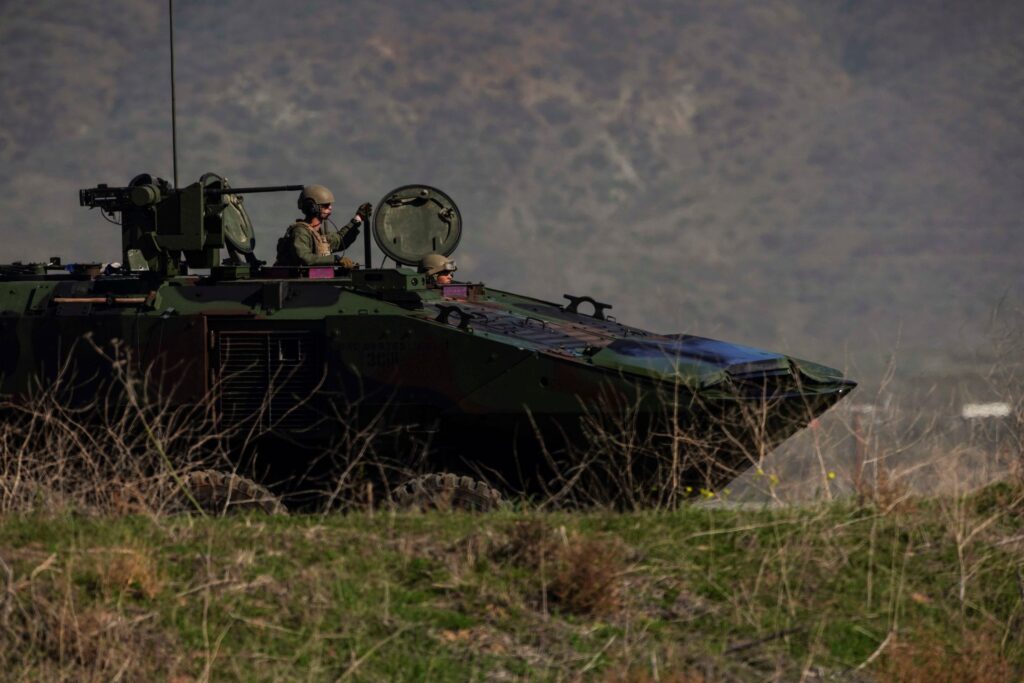
ARLINGTON, Va. — In addition to developing expeditionary warfare concepts like Marine Littoral Regiments and the light amphibious warship that would transport and supply them, the Office of Naval Research is looking into how to keep both safe and unseen by adversaries.
The first Marine Littoral Regiment, or MLR, an evolution of a traditional Marine infantry regiment, is being built in Hawaii and expected to be fully operationally capable next year for live force experimentation, complemented by war gaming and simulations, Marine Corps Brig. Gen. Benjamin Watson told the National Defense Industrial Association’s virtual Expeditionary Warfare Conference Feb. 10.
The light amphibious warship, an anticipated bridge between traditional big L-class amphibious warfare ships and smaller ship-to-shore connectors like the across-the-beach air cushioned landing craft, is still in the concept stage, said Watson, the commanding general of the Marine Corps Warfighting Laboratory/Futures Directorate and vice chief of the Office of Naval Research.
Both the MLR and LAW are expected to be key factors in the expeditionary advanced base operations concept, which envisions littoral operations by specialized mobile, low signature units within larger distributed maritime operation areas. Small, maneuverable expeditionary advanced bases will conduct sea control and denial operations using advanced sensors and long range missiles and artillery.
But the heat and radiation emitted by such high-powered platforms can be a liability in a very degraded and denied environment, said Marine Corps Col. William DePue Jr., ONR’s Expeditionary Portfolio director. “In this environment, if you emit, you’re a target. If you don’t, you’re blind,” he said.
ONR is working on technologies that will allow the expeditionary advanced base Marines to passively sense the environment and sense what adversaries are doing while managing their own signatures “so that we emit when it’s smart to do so and in ways that limit or avoid detection by the enemy,” DePue said.
Researchers are also working ways to reduce food and fuel demands, particularly the shipment of liquids to advanced bases that make them and their supply vessels vulnerable. How to access more energy is a multi-faceted problem, according to Watson.
“It’s one we really need industry’s help with,” he said. “You can’t just solve the problem with enhanced distribution and sustainment capabilities. You need to reduce demand.”
- Shall We Play a Game? Winning Isn’t the Point, Experts Say - April 5, 2023
- U.S. Goal: Maintaining Extended Presence in Arctic’s Harsh Environment - April 4, 2023
- Joint, Combined Exercise Shows Marine Littoral Regiment Idea is on ”Right Track’ - February 24, 2023






